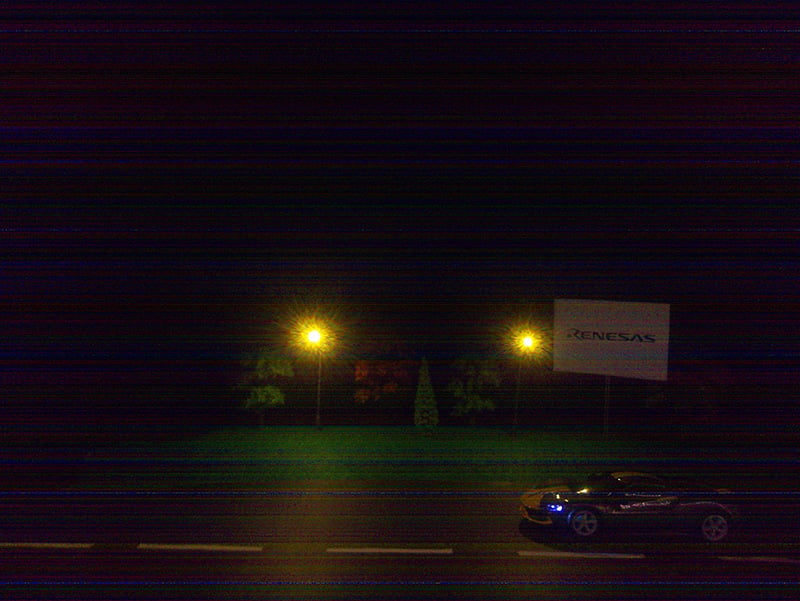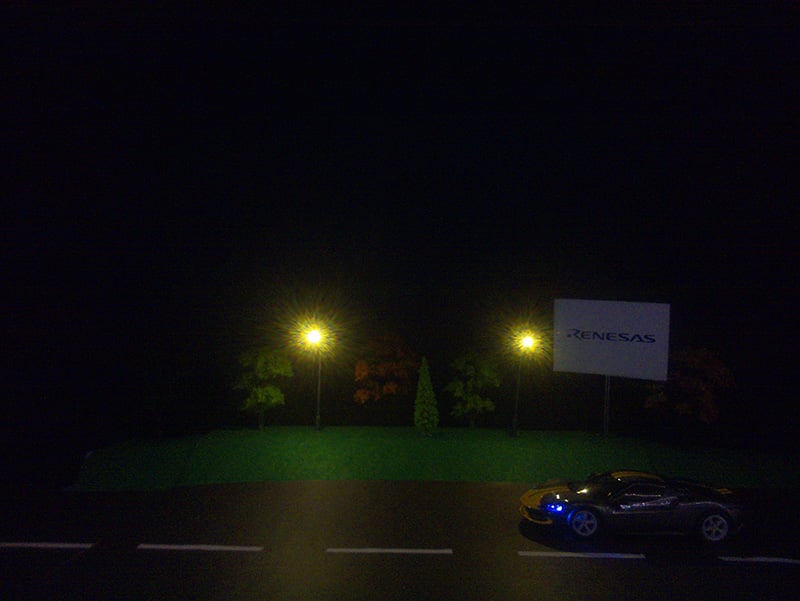The market for advanced cameras is constantly growing and, in addition to traditional applications, these cameras are now widely used in smartphones, cars, and drones. The main element of the cameras is the image sensor. An image sensor detects and conveys information used to form an image by converting the variable attenuation of light waves (as they pass through or reflect off objects) into signals – small bursts of current that convey the information.
The image sensor market has seen consistent growth and is expected to continue expanding at a significant rate, with a compound annual growth rate (CAGR) ranging from 6% to 9%. The following graph demonstrates recent trends in the image sensors market size and provides a forecast for its future development.

* Source: https://market.us/report/image-sensors-market/
In the world of advanced imaging, capturing the perfect image involves much more than just focusing a lens or adjusting lighting. A crucial but often overlooked challenge of achieving high image quality is managing electrical noise in the power supply. For high-performance camera systems, especially those found in smartphones, drones, and autonomous vehicles, minimizing noise is essential for delivering sharp, clear images.
To ensure a stable voltage, it is necessary to use voltage regulators. The SLG51003 Power GreenPAK™ IC is specifically designed to address this challenge by offering a compact, efficient, and customizable solution with three low dropout regulators.
The Impacts of Electrical Noise on Image Quality
Electrical noise is an unwanted disturbance in an electrical signal that can degrade image quality in several ways. In camera systems, noise can manifest as random variations in pixel values, leading to grainy images, reduced dynamic range, and lower overall sharpness and clarity. Here are the key noise components that impact image quality:
- Voltage Ripple and Noise: This type of noise is caused by fluctuations in the power supply voltage, often originating from switching regulators or external power sources. Voltage ripple can introduce banding or color shifts in images, especially in low-light conditions or when the camera sensor is operating at high-sensitivity settings.
- Electromagnetic Interference (EMI): EMI is another significant noise source, often generated by high-frequency switching circuits within the camera system. This interference can cause noise patterns or artifacts in images, particularly when the camera is used in environments with strong electromagnetic fields.
- Thermal Noise: Thermal noise is generated by the random motion of electrons in a conductor and increases with temperature. In imaging applications, thermal noise can affect the sensor's ability to capture faint details, reducing the signal-to-noise ratio (SNR) and impacting the quality of the final image.
- Switching Noise: Generated by the rapid on-and-off switching of transistors within a PMIC, switching noise can interfere with the analog circuitry of camera sensors, introducing distortion or signal degradation.


Key Features of the SLG51003 for Noise Management
- Low Output Voltage Ripple: The SLG51003 incorporates high-efficiency buck converters with low output voltage ripple, significantly reducing power supply noise. This feature is crucial for maintaining clean, stable power to sensitive camera sensors and processors, which directly impact image quality.
- Advanced Switching Regulators: The SLG51003 IC's integrated switching regulators operate at high frequencies, which allow for smaller output filtering capacitors and reduce the impact of switching noise on the camera's analog circuits. This design choice is particularly beneficial for minimizing EMI and maintaining high image fidelity.
- Thermal Management and Low Quiescent Current: With a low quiescent current, the SLG51003 minimizes thermal noise, ensuring that the camera's sensors operate within optimal thermal conditions. This thermal management helps maintain a high SNR, allowing for better image quality, especially in low-light environments.
- Integrated EMI Filtering: To further reduce electromagnetic interference, the SLG51003 features integrated EMI filters, which help maintain a clean signal path and reduce potential image artifacts caused by external or internal interference sources.
- High PSRR (Power Supply Rejection Ratio) and Low Noise Performance: The SLG51003 boasts a high PSRR, which means it effectively filters out noise from the power supply, ensuring that the camera sensors receive a clean, stable voltage. This is crucial for minimizing noise artifacts in the image, such as banding or pixelation, particularly in low-light conditions where the sensor sensitivity is high. The low noise performance further reduces any potential interference with the analog circuits in the camera system, helping maintain the integrity of the captured image.
- High Peak Current Capability on All Channels: Each power channel of the SLG51003 is designed to handle high peak currents, which is essential when powering multiple high-performance components such as image sensors, processors, and communication modules. This capability ensures that the camera can maintain stable operation even during moments of high demand, such as rapid autofocus adjustments or high-speed burst shooting, without introducing voltage drops or noise spikes that could degrade image quality.
- User Pin-Selectable I²C Slave Address: The SLG51003 provides flexibility in system integration by allowing users to select the I²C slave address through pin configuration. This feature simplifies the design process, especially in multi-camera setups where multiple PMICs might be used, reducing the risk of address conflicts and ensuring reliable communication with the system's main controller. By enabling seamless integration, the SLG51003 supports more complex imaging applications without adding unnecessary noise or signal interference.
- Customizable Configurations, Controls, and Built-In Power Sequencer: The SLG51003 offers extensive customization options for power configurations and controls, including a built-in power sequencer. This flexibility allows designers to fine-tune the power-up and power-down sequences of various components to reduce inrush currents and prevent noise spikes. Proper sequencing is particularly important in high-resolution camera systems, where different components, such as image sensors, processors, and memory need to be powered in a specific order to ensure optimal performance and minimal noise interference.
- Small Plastic TQFN Package for Affordable PCB Solution: Designed in a compact, thermally efficient TQFN (Thin Quad Flat No-Lead) package, the SLG51003 provides an affordable solution for PCB design, reducing overall system costs without compromising on performance. The small footprint of the TQFN package allows for greater design flexibility, especially in space-constrained applications like smartphones, drones, and wearable cameras, where minimizing board size is critical. Additionally, the thermal efficiency of the package helps dissipate heat effectively, reducing the potential for thermal noise which can degrade image quality over time.
Improving Image Quality with the SLG51003: Real-World Applications
The SLG51003's advanced noise management capabilities make it an ideal choice for a variety of camera applications, from consumer electronics to automotive imaging systems. Let's explore some real-world examples where the SLG51003 can enhance image quality:
- Smartphone Cameras: In high-end smartphones, camera modules are becoming increasingly sophisticated, with multiple sensors and advanced features like optical zoom and image stabilization. The SLG51003's low noise output is essential for minimizing voltage ripple and EMI, ensuring sharp, clear images even in challenging lighting conditions.
- Drones and Action Cameras: In drones and action cameras, compact size and weight are critical. The SLG51003's small form factor and integrated power management features reduce the need for external components, saving space while providing clean power to the camera system. This ensures high-quality imaging in fast-moving or vibration-prone environments.
- Automotive Camera Systems: For automotive applications, such as advanced driver-assistance systems (ADAS), image clarity and reliability are paramount. The SLG51003's noise reduction features help maintain high image quality in environments with significant electromagnetic interference such as near power lines or heavy industrial equipment.
Conclusion
Managing electrical noise is a critical aspect of optimizing image quality in advanced camera applications. The Renesas SLG51003 Power GreenPAK IC provides a comprehensive solution for minimizing noise components and ensuring clean, stable power delivery to camera sensors and processors. With features such as low output voltage ripple, advanced switching regulators, thermal management, and integrated EMI filtering, the SLG51003 is ideally suited for a wide range of imaging applications.
By using the SLG51003 in your camera designs, you can improve image quality, enhance system reliability, and ensure your products deliver the best possible user experience. Explore more about the SLG51003 and other power management solutions from Renesas on our website. Order an SLG51003V-EVB evaluation board to get started.
